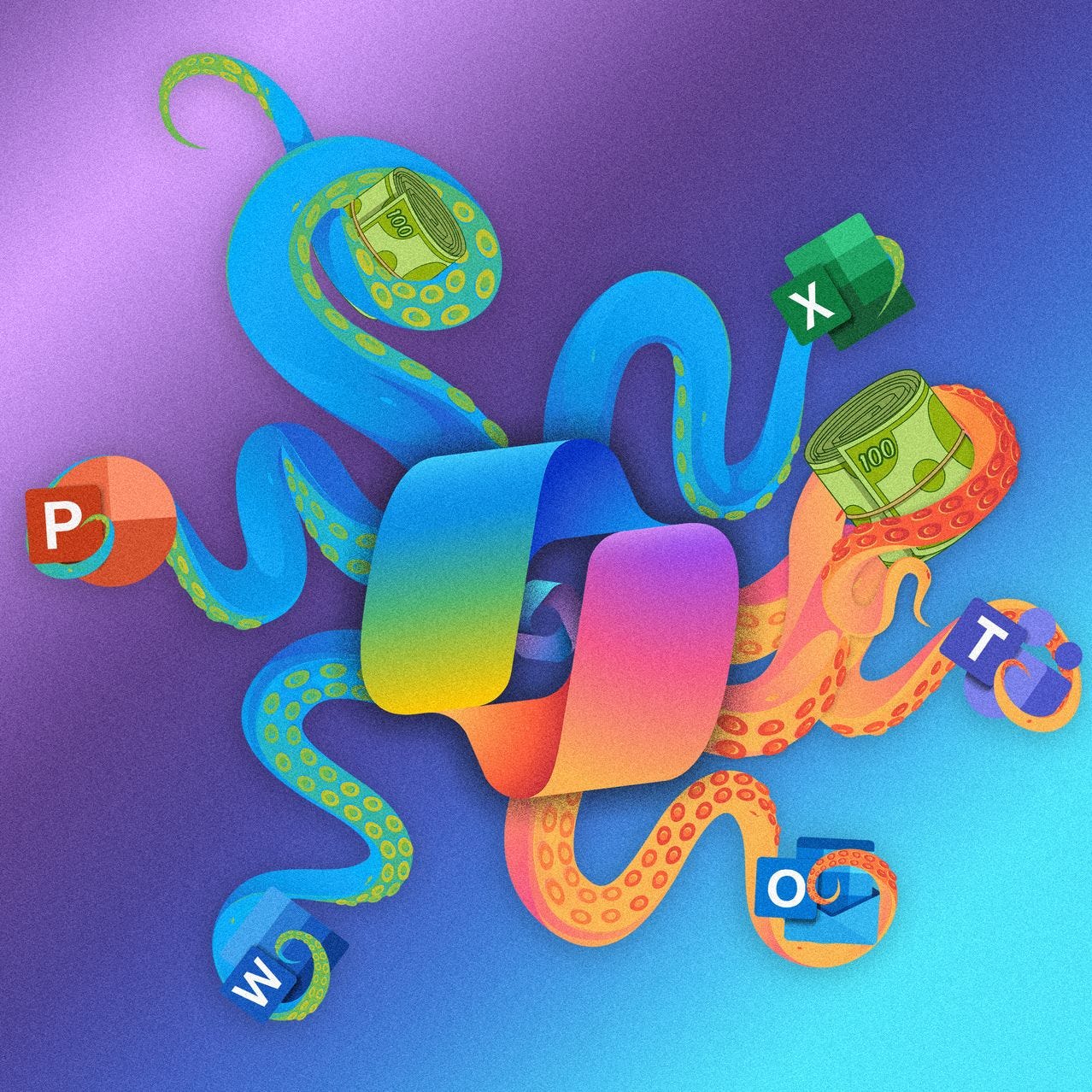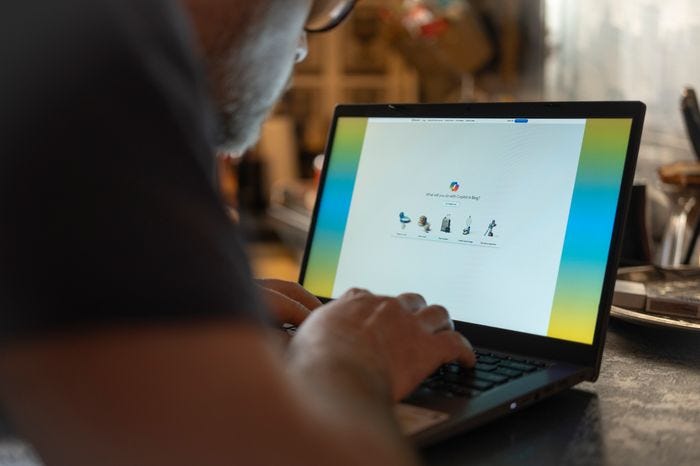AI: Microsoft Copilot a Work in Progress
...financial and secular cycles in AI tech adoption not always in sync
I’ve long maintained in various write-ups here that AI enhanced productivity will at times take longer than we all expect, and would prefer. Product Market Fit by customers often takes a while, even after the product is seemingly baked.
And this applies to AI productivity in the office. This includes AI applications, services, and platforms. As I recounted a few days ago, we now have $20+/month AI augmented service packages on office productivity, from all the three main AI providers, OpenAI with ChatGPT Plus, Google Gemini Advance, and of course Microsoft Copilot.
And no company has rolled the dice on this as aggressively as Microsoft and it’s CEO Satya Nadella, adding its OpenAI ChatGPT/GPT leveraged AI Copilot, across all its key products and services.
These include Microsoft Office 365, Windows, Teams, and of course Microsoft’s coding assets in Github. As the WSJ reminds us in a recent piece:
“During Microsoft’s recent earnings call, Copilot was mentioned more than 50 times. Chief Executive Satya Nadella likened it to the adoption of the personal computer in workplaces.
“We’ve moved from talking about AI to applying AI at scale,” he said.:
And the AI rubber is now hitting the road. Especially as Microsoft is aggressively Bundling AI Copilot into most of Microsoft’s offerings.
As the WSJ continues in its piece “Early Adopters of Microsoft’s AI Bot Wonder if it’s worth the money”:
“Artificial-intelligence aide handles email, meetings and other things, but its price and limited use have some skeptical.”
“Microsoft’s new artificial-intelligence assistant for its bestselling software has been in the hands of testers for more than six months and their reviews are in: useful, but often doesn’t live up to its price.”
“The company is hoping for one of its biggest hits in decades with Copilot for Microsoft 365, an AI upgrade that plugs into Word, Outlook and Teams. It uses the same technology as OpenAI’s ChatGPT and can summarize emails, generate text and create documents based on natural language prompts.”
“Companies involved in testing say their employees have been clamoring to test the tool—at least initially. So far, the shortcomings with software including Excel and PowerPoint and its tendency to make mistakes have given some testers pause about whether, at $30 a head, it is worth the price.”
The piece goes onto to give both anecdotal and market trend information on how various companies across different industries are experimenting with and deciding on at scale deployment of the AI Copilot technologies. And this early on, as one would expect, the results are mixed at this very early stage:
““I wouldn’t say we’re ready to spend $30 per user for every user in the company,” said Sharon Mandell, the chief information officer at networking hardware company Juniper Networks, which has been testing Copilot since November.
Microsoft has said that early demand from users is unprecedented and the companies testing it have found it valuable. The company hasn’t shared specifics about sign-ups.”
Microsoft of course has one of the biggest bets on AI in the workplace, via its multi-billion dollar partnership with OpenAI, as the WSJ goes onto point out:
“The company has bet billions—notably through its $13 billion investment in OpenAI—that it can lead the way in AI. Its shares have soared on the belief that the technology will turbocharge its revenue, making it the most valuable company in the world. On Sunday, it showed its first Super Bowl ad in four years, touting Copilot as a tool that can help young people realize their entrepreneurial dreams.”
“Copilot has to be a success for the stock to work,” said Rishi Jaluria, an analyst with RBC Capital.”
And that of course is critical for public market investors, who’ve helped add almost a trillion dollars in market cap to ‘Magnificent 7’ leader Microsoft since OpenAI’s “ChatGPT Moment” back in November 2022. And for now taken Microsoft’s market cap ahead of Apple’s at over three trillion dollars.
As I’ve often recounted, financial market cycles will often converge AND diverge from the underlying secular technology cycles. And it’s going to be n different in this AI Tech Wave. We’ll continue have to wait for the eventual deployment of these AI products and services at scale, and it’s going to be an ebb and flow process in the very near term. Stay tuned.
(NOTE: The discussions here are for information purposes only, and not meant as investment advice at any time. Thanks for joining us here)






